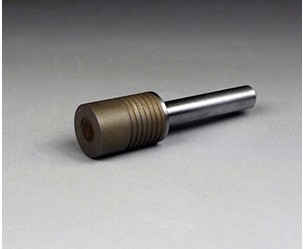
Nowadays, smart phone and tablet PC are designed thinner and lighter, glass panel with integrated touch sensors have become a prevailing trend. The new glass panel turns thinner and stronger after chemically enhanced processing technology.
Background
Nowadays, smart phone and tablet PC are designed thinner and lighter, glass panel with integrated touch sensors have become a prevailing trend. The traditional technique to embed touch sensors between LCD panel and glass covering sheet will be replaced in the near future. The new glass panel turns thinner and stronger after chemically enhanced processing technology.
Let's take a look at how traditional glass touch panel is produced. Grinding wheels are used to cut off from a big glass plate the right size for touch panel, then chemical enhanced process is needed, and it will have to go through print process to be embedded into sensor electrode at last. Usually, to improve working efficiency, manufacturers will have the whole glass plate chemically enhanced at first, and finish other processes necessary.

Problems
For safety, the edges are chamfered after the glass board is cut. In conventional production processes, the chemical strengthening is performed after the chamfering process and hence a strong layer is formed on the edge faces. Therefore the quality of the chamfering (e.g. surface roughness or amount of micro cracks) has little influence on the edge face strength.
Because of low cost and many suppliers, electro plated diamond wheels are more popular in this process than other bond wheels irrespective of rough work surface. However, electro plated wheels have a thin diamond layer and hence a relatively shorter life.

On the other hand, if the cutting and chamfering are performed after the chemical strengthening, the chamfering quality would have a direct influence on the edge face strength since the chamfered edge face has no strengthening layer. The diamond abrasive grains of the electro plated wheels strongly work on the glasses and necessarily produce many micro cracks. The micro cracks created on an area that is not chemically strengthened are likely to grow to a crack and lower the edge face strength.
In the final finishing process of mirror-like polishing of the chamfered edge face, the edge face is polished with a brush or chemically processed with hydrogen fluoride. However, this process only works on the ultra-thin surface layer of the edge face, leaving many micro cracks.

Solutions:
A company in Japan has developed a grinding wheel with metal bonding agent, which can achieve chamfering process effectively and result in better surface toughness. Meanwhile, it can avoid craze and cracks from occurring during cutting process.

Metal bond wheel for chamfering glass:
